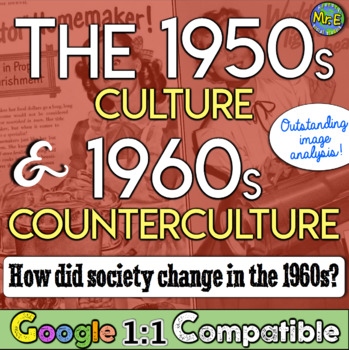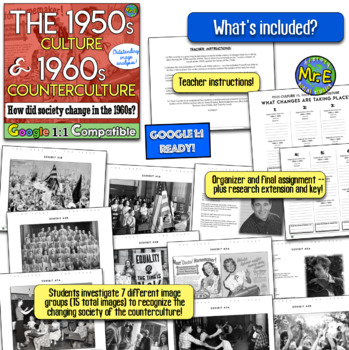1950s Culture vs 1960s Counterculture: 15 Image Gallery Walk & Research Project!
- Zip
What educators are saying
Description
In this engaging 1950s and 1960s (culture and counterculture) gallery walk project, students learn the characteristics of 1950s culture and the 1960s counterculture, complete a classroom organizer, and conduct research further about leaders of the 1960s counterculture movement (Jack Kerouac, Jane Fonda, Bob Dylan, Betty Friedan, and Timothy Leary).
Students navigate 7 different image sets, each with a different focus, to learn about how the 1950s and 1960s viewed authority, patriotism, music, women and gender roles, dancing and entertainment, and conformity differently. In each set, students use the included PowerPoint to identify which image best fits the 1950s and 1960s characteristics. In the final assignment, students complete a short prompt, create a cause-and-effect cartoon, and conduct research on other individuals of the 1960s counterculture!
This resource is included in the Birth of American Culture (1950s and 1960s Culture) Unit, located here!
A key and a Google 1:1 version are included!





